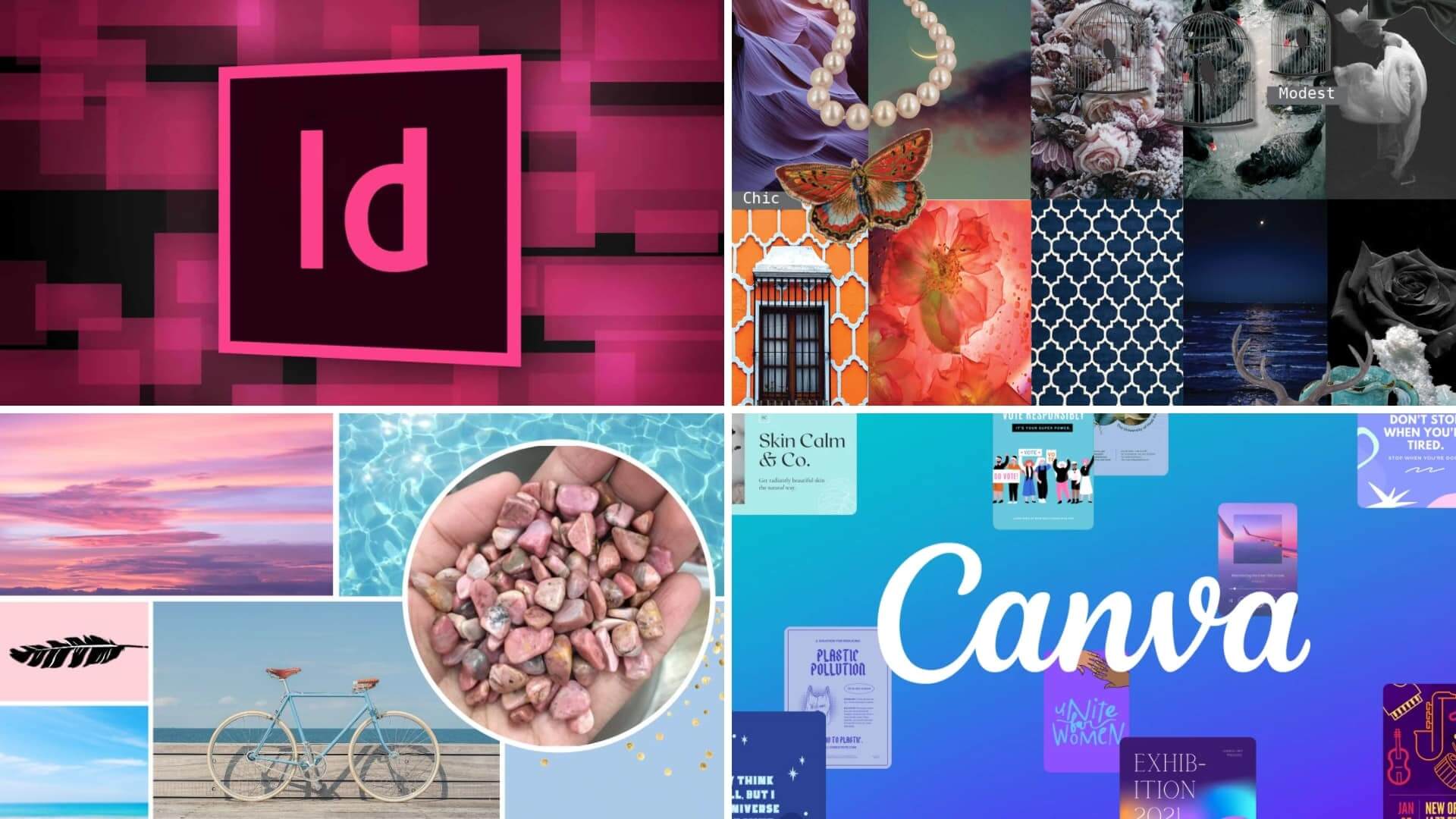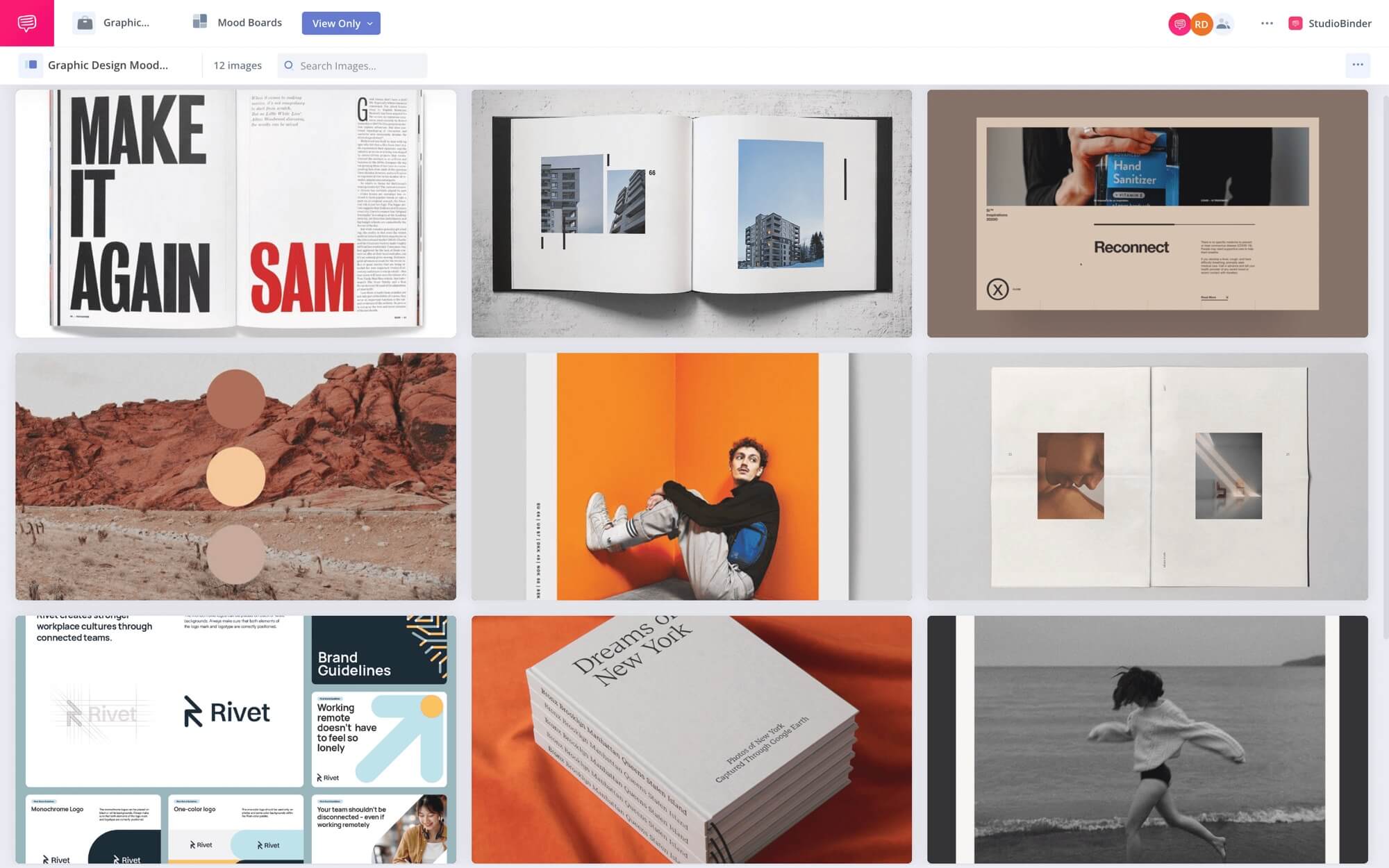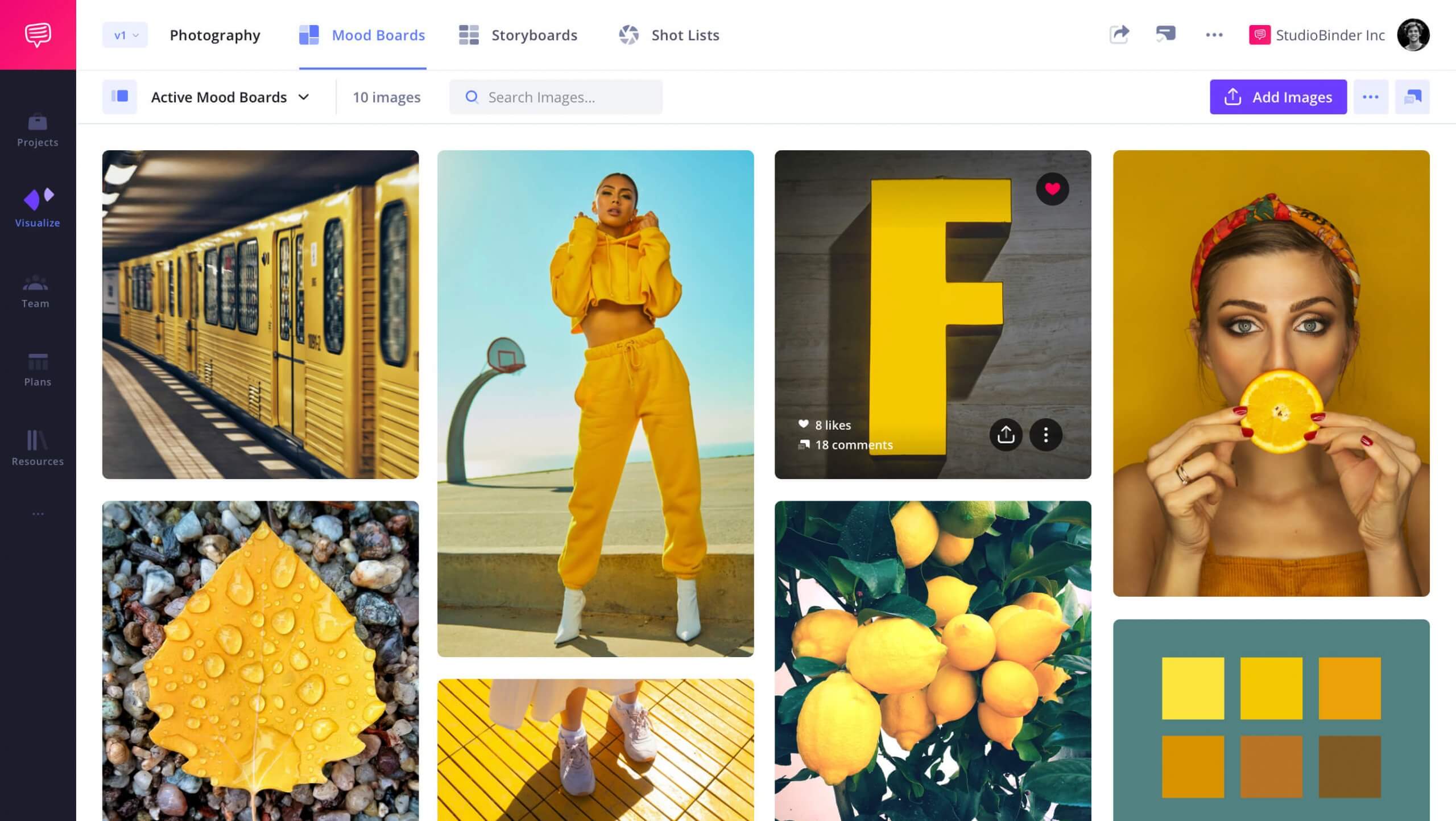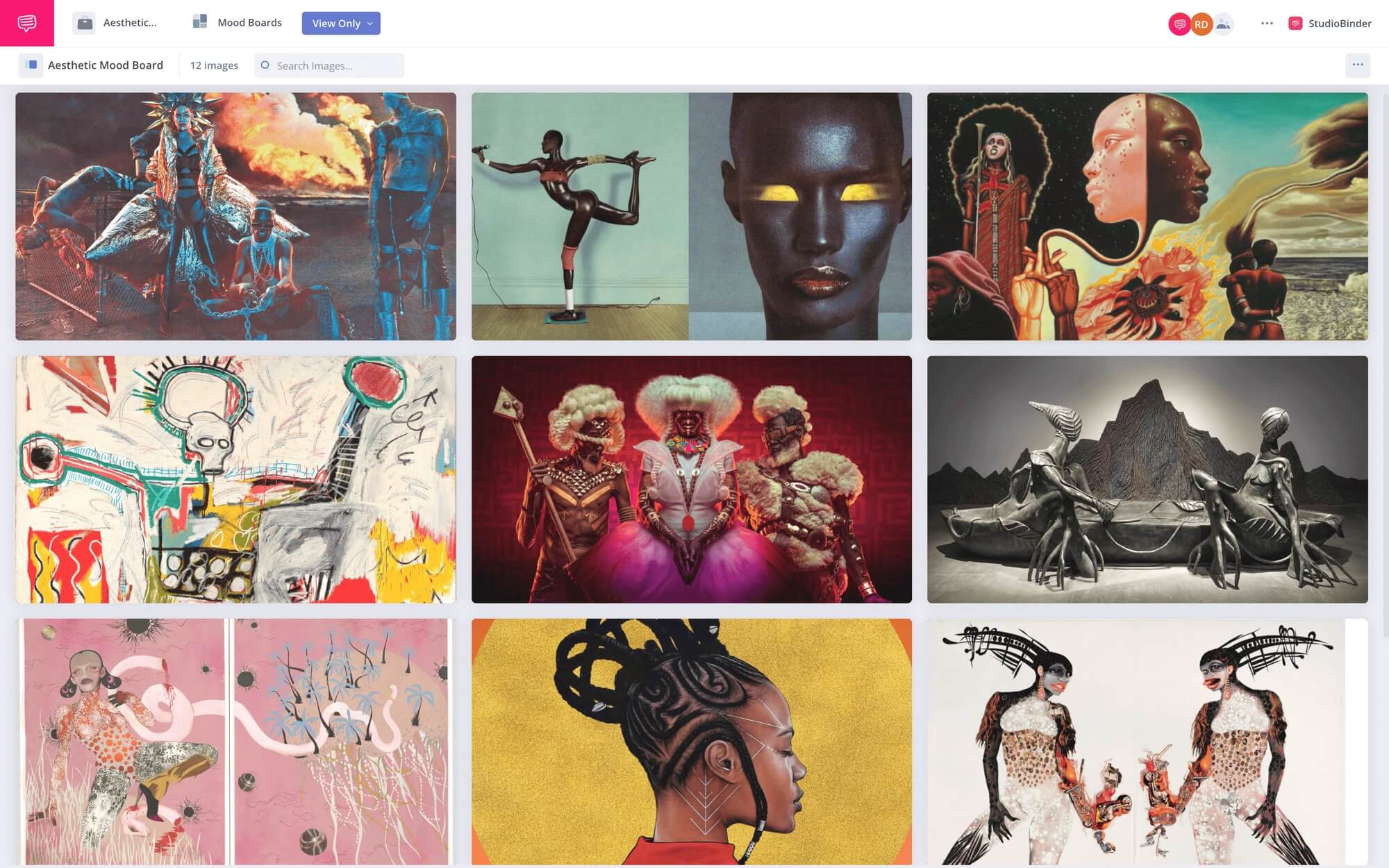Creating a digital mood board is a great way to visualize ideas and stay organized. A mood board helps you collect all types of visual inspiration in one place, from screenshots to videos and photos, so that you can compare different art styles and make better decisions.
With the right resources, it’s easy to assemble the perfect digital mood board for any project whether it be film, photography, fashion, interior design, video games or graphic design. Let’s learn how to make a digital mood board
What is a Digital Mood Board Used For?
First, let’s define digital mood board
Creating a digital mood board also gives you the flexibility to experiment with different visuals without having to start from scratch each time. To better understand how to make one, let’s look at the definition.
DIGITAL MOOD BOARD DEFINITION
What is a digital mood board?
A digital mood board is a collection of visuals and objects used to create a visual representation of an idea or concept. These can be compiled from photos, videos, textiles, colors, and other digital elements. They can be used to set the tone for a project and help designers refine their vision by providing a reference point for inspiration and ideas.
Mood boards are often used by designers, photographers and filmmakers to help create a visual narrative for their project and develop its aesthetic. They can also be helpful for developing concepts, collecting ideas and staying organized during the creative process.
What creative industries use mood boards?
- Filmmakers
- Photographers
- Interior Designers
- Fashion Designers
What is a Digital Mood Board Used For?
Digital vs Physical mood board
Digital mood boards have many advantages over traditional, paper-based boards. One advantage is that they are easy to share or access from any device.
Digital mood boards allow for file sharing and collaboration – a single URL links collaborators to the board wherever they have an internet connection. Additionally, digital mood boards are easier to update than physical versions.
Here's an example we created using StudioBinder's mood board software.
Digital Mood Board Example
They can be edited and updated with new content in a matter of seconds without having to re-print them. Finally, digital mood boards provide an excellent platform for presentation. They can be easily viewed on large screens such as TV monitors or projectors and can be interacted with through touchscreens or remote controls.
How to Make a Digital Mood Board
Determine a purpose
An important step and the first step when creating any mood board is determining its purpose. To do this, you need to be clear on the creative project you’re working on and what kind of feeling or vibe you want to convey.
Ask yourself questions such as: What type of content would work best for the project? How can I effectively communicate the overall message of the project in visuals? What colors will help blend the content together?
Once you have answers to these questions, you can use them to create a purpose for your mood board.

Mood Board Example
Additionally, it helps to look through existing visuals and inspirations from other sources so that you can determine how they support your objectives. This should give you a better idea of how to structure and populate your mood board so that it serves its intended purpose.
Determining a purpose will also be important for our next step which is to gather inspirational and aspirational material.
Related Posts
Tutorial on How to Make a Digital Mood Board
Gathering Inspiration
Because your mood board will be created digitally, your materials should be digital as well. This means either the source of your inspirational material must be online or (if they are physical) they must be made digital via scans, photography, etc.
Here’s a great in depth video on how to make a digital mood board.
How to Make a Digital Mood Board
Online resources can include websites such as Pinterest and Instagram where you can find curated visuals and content relevant to your project. You can also search for images, icons and other visuals that suit the theme of your project.
In addition to online resources, look for tangible items such as books or magazines that offer creative ideas or visually stimulating content.
You can even take photos of physical objects or visit real-world locations for more inspiration.
Finally, don’t be afraid to experiment with different styles and textures – you may find something unexpected that works perfectly in your mood board. Feel free to research and look for inspiration outside of your selected industry.
For example, plenty of filmmakers create film mood boards by looking at interior design mood boards or fashion design mood boards for inspiration.
Related Posts
How to Create a Digital Mood Board
Select your mood board software
Choosing the right mood board software when learning how to make a digital mood board is an important step in the creative process. There are various programs and websites that are suited for this purpose, including some free options.
You should consider factors such as ease of use, the ability to customize design elements, the ability to add visuals from online sources and support for multiple media types.
Popular programs such as Adobe InDesign or Canva provide powerful tools to create custom layouts with drag-and-drop functionality, while websites like Pinterest and Tumblr allow users to easily share their work with others.
Our go-to for creating any digital mood board is StudioBinder’s mood boarding app. It’s intuitive, easy to collaborate on, and free to try. Check out an example digital mood board that we created on the app in the link below.
How to Create a Digital Mood Board • Example
Additionally, most of these platforms will have built-in tutorials and helpful tips to help you get started with creating your mood board.
How to Make a Digital Mood Board
Assemble your mood board
Assembling a mood board with an aesthetic composition is essential to the success of your project. Start by planning out how you want it to look and consider how the elements should be laid out. Balance the visuals with text, color, and white space so that each element stands out on its own.
Try to create a visual hierarchy as well. Group related items in cohesive clusters, use contrasting font sizes and styles for text, vary image size and position and adjust spacing between different components.
How to Create a Digital Mood Board • Example
Lastly, don’t forget to add details such as shadows or frames to draw attention to specific parts of the design. With a bit of creativity, you can create a stunning mood board that conveys your message effectively and efficiently.
Creating a digital mood board can be a great way to explore and express your ideas visually. Whether you’re a fashion designer or movie director, it’s important to use the right software, plan out your composition, and add thoughtful details to make your design stand out. With some research and experimentation, you’ll be well on your way to creating the perfect digital mood board for any occasion.
Digital Mood Board Template Example
Create mood boards with a template
If you’re looking for more free mood board templates look no further.
No matter what creative project you're working on, we have mood board templates for photography, film, branded content, and more. See the entire collection in our template library where you'll also find templates for shot lists, storyboards, and AV scripts.
Related Posts
Up Next
What is a Mood Board?
If you’re still unclear as to what components make up a mood board, check out our next article. We’ll take a look at what a mood board is and what elements make up a great aesthetic mood board.
Up Next: Mood Board Essentials →
Showcase your vision with elegant shot lists and storyboards.
Create robust and customizable shot lists. Upload images to make storyboards and slideshows.



